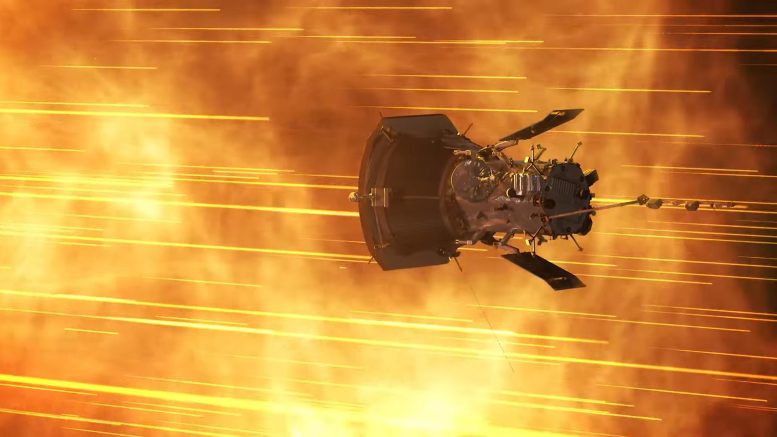
NASA’s Parker Solar Probe marks five successful years in space, achieving milestones like touching the Sun and collecting more than double the expected data. The mission’s continuing journey promises to deepen our understanding of space weather and the Sun’s effects on Earth. Credit: NASA GSFC/CIL/Brian Monroe
NASA’s Parker Solar Probe, launched five years ago, has made remarkable achievements, including becoming the first spacecraft to “touch the Sun.” It has collected vital data on the Sun’s upper atmosphere and solar wind, breaking speed and distance records in the process. The mission reflects decades of innovation and will continue to enhance our understanding of the Sun’s relationship with Earth.
On August 12, 2018 – five years ago this week – NASA’s Parker Solar Probe blasted off atop a powerful Delta IV rocket from what is now Cape Canaveral Space Force Station. The predawn launch into the skies over the Florida coast marked the start of a game-changing mission to unlock the secrets of the solar wind – and the culmination of decades of development to craft a robotic explorer able to withstand the heat and radiation near the Sun like no other spacecraft before it.
Designs for a “Solar Probe” started coming together in 1962, just four years after the National Research Council’s Space Studies Board first proposed a mission to explore the environment near the Sun. But the technology to pull off such a bold endeavor, especially the material ingredients for an effective heat shield, just wasn’t available – yet.
Development and Mission Design
Material advances in the 1970s allowed NASA to begin considering a flyby close enough to directly sample the Sun’s upper atmosphere – the corona – and the solar wind. The initial mission science definition formed in a 1978 workshop at NASA’s Jet Propulsion Laboratory (JPL), but the means to implement the mission would take decades to come together – with JPL and the Johns Hopkins Applied Physics Laboratory (APL) developing concepts for a nuclear-powered Sun skimmer between 1982 and 2005.
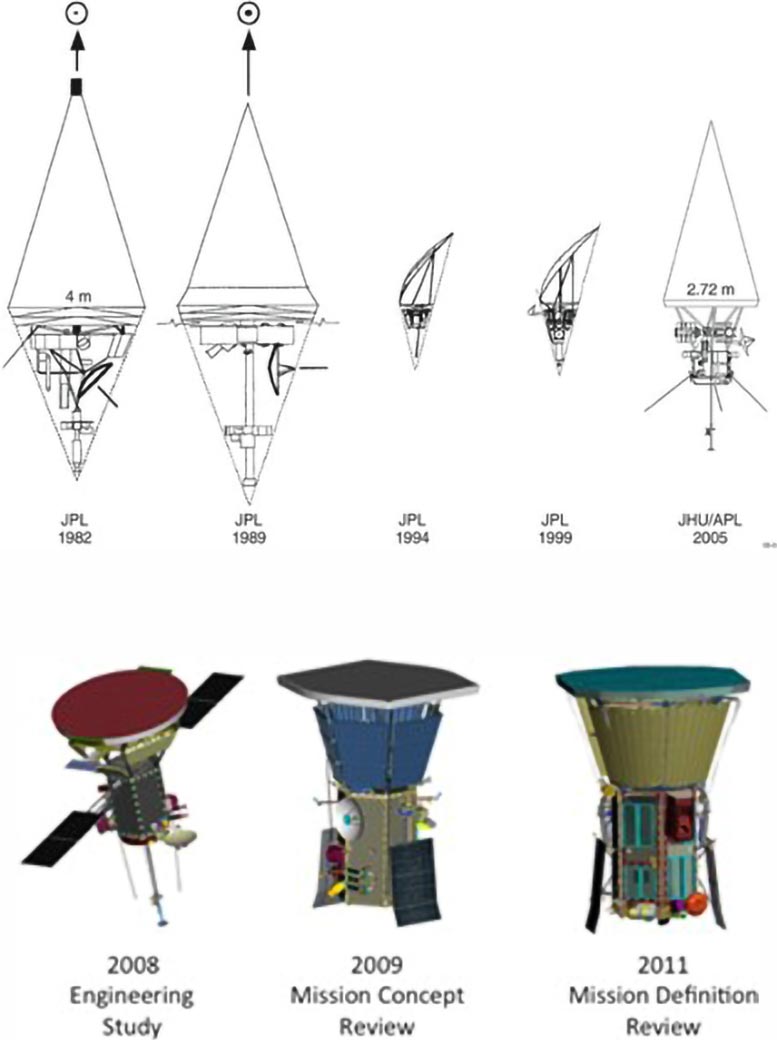
Evolution of a spacecraft: Designs for a Solar Probe changed through the decades, based on technologies and mission plans at the time. NASA’s directive for a Sun-skirting spacecraft led to the design of the Parker Solar Probe mission, which this week celebrates five years in space. Credit: NASA/Johns Hopkins APL
In 2007, NASA asked APL to consider a concept for a spacecraft that could cozy up to the Sun, and from that – with the right combination of groundbreaking thermal-protection technologies and clever mission design – evolved the Parker Solar Probe mission that now marks its first half-decade.
“No matter its form, the core of the mission has always been a close encounter with the Sun,” said Jim Kinnison, Parker Solar Probe mission systems engineer at APL. “It took significant technology development, innovative mission design, and a risk-reducing engineering plan – and now, the Parker team is fulfilling an exploration vision laid out at the dawn of the Space Age.”
Achievements and Discoveries
After five years of flying through the hottest and dustiest swaths of the inner solar system, Parker Solar Probe – which in 2021 became the first spacecraft to “touch the Sun” – isn’t just surviving, it’s thriving. The spacecraft has returned more than twice the amount of data that scientists expected, making discoveries critical to understanding the source and properties of the solar wind. The spacecraft recently completed its 16th science orbit, out of 24 planned during the primary mission. And on August 21 Parker will zoom past Venus for a gravity assist, a move that will tighten its orbit around the Sun and allow it to take measurements of the Venusian surface and atmosphere.
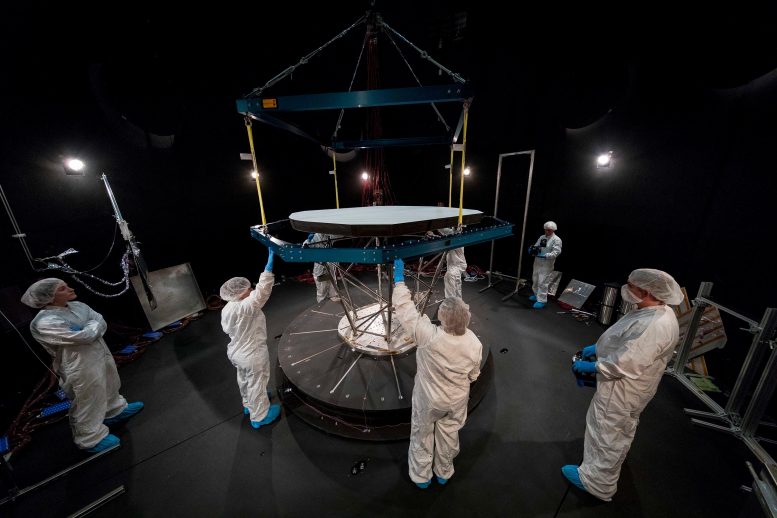
Protecting the probe: Engineers from the Johns Hopkins Applied Physics Laboratory prepare the Parker Solar Probe Thermal Protection System – one of the mission’s enabling technologies — for space-environment testing in a thermal vacuum chamber at NASA’s Goddard Space Flight Center, Maryland, in January 2018. Credit: NASA/Johns Hopkins APL/Ed Whitman
Thanks to that gravity assist, on September 27, Parker Solar Probe will be traveling at 394,742 miles per hour when it comes within 4.5 million miles of the Sun’s surface – breaking its own speed and distance records around the Sun. It will ultimately dip to within just 3.8 million miles from the Sun, speeding by at 430,000 miles per hour, in December 2024.
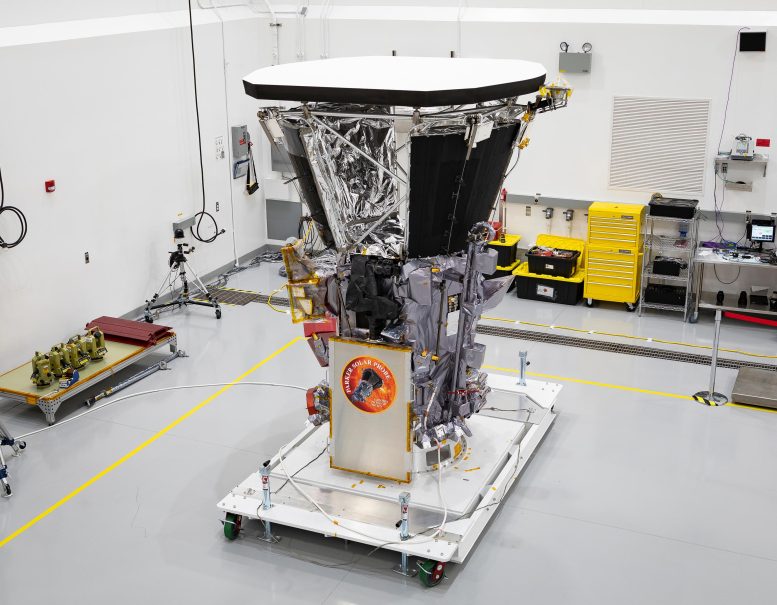
Achievements and Discoveries The actual Parker Solar Probe spacecraft was prepped for launch in a cleanroom at Astrotech Space Operations in Titusville, Florida, in July 2018. Credit: NASA/Johns Hopkins APL/Ed Whitman
Impact and Future Prospects
“We are in a golden era of heliophysics exploration,” said Nour Raouafi, Parker Solar Probe project scientist at APL. “In just five years, Parker Solar Probe has changed our understanding of the Sun and the activities that connect it to – and affect – life on Earth. As we speed closer and closer to the solar surface, we will learn more about the properties of the Sun itself, but that data will also significantly improve our knowledge of space weather and our ability to live and work in space.”
Parker Solar Probe was developed as part of NASA’s Living With a Star program to explore aspects of the Sun-Earth system that directly affect life and society. The Living With a Star program is managed by the agency’s Goddard Space Flight Center in Greenbelt, Maryland, for NASA’s Science Mission Directorate in Washington. APL designed, built, and operates the spacecraft and manages the mission for NASA.





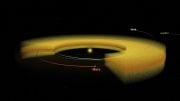
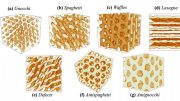

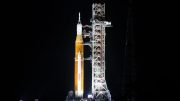
Let’s see if I can wrap my head around 430,000mph …
– 7167 miles per minute
– 119.4 miles per second
– Circumnavigate Earth in 3.5 min
– Go to moon in 33.5 minutes
– 25x faster than the ISS
– 0.00064% of light speed
When it touched the sun, why didn’t it melt. What is the material it is madeof.
The temperature of the particles the probe will encounter are very high, but they are very sparse similar to a spacecraft entering the upper atmosphere but much hotter and more sparse. Also one side faces the sun and one side faces the cold of space. So the total heat the spacecraft has to dissipate remains manageable. “Touching” the sun is a bit of poetic license.
Wasted Money! People are in tents and cannot find employment or benefits and zillions were spent on this space junk to find out what? That the JPL is a UFO CIA KK
Money Stealing Machine. Hit the Parker Sattelite Self Destruct button.
I m wondering that what will happened next.are we going to live on sun?
Hello
This should facilitate the way to shield the sun and end the scorching of the earth.
Time to build the Dyson sphere
I wonder if they calculated what would happen if a nuclear powered probe crashed into the sun. What happens when you crash a tiny fission reactor into a massive fusion reactor?
Thats when the Sun will be darkened!!!!Hope not
Hahahahaha as if anything we could make would even remotely be within the 1% of 1% of doing literally anything to the scale of our solar goddess
Very good achievement
Great and outstanding science!! The more we understand our universe the more we can enjoy and use the resources to survive.
The probe is amazing, but the speed…. this would be like a 35 minute trip to the moon… w/o takeoff and landing times.
Don’t know what to say.Amazing fest!!
But then we’ve come to expect as
Much!
Total waste of money. Interesting enough but still a waste.
Amazing speed. How many gravity assists did it take to achieve this velocity?